Canna lilies bring a special kind of tropical pizzazz to landscapes. Those iconic flowers and large, banana tree-like leaves can turn any area into a tropical sanctuary.

We link to vendors to help you find relevant products. If you buy from one of our links, we may earn a commission.
But like many garden plants, we’re not the only ones that admire their large foliage and flowers. Garden pests are quick to target canna lilies due to their tasty-looking leaves and water-loving characteristics.
Coming up, here are the main pests you’ll see while growing canna lilies, and how best to prevent and manage infestations:
Common Canna Lily Pests
Luckily, all the pests that can affect your beloved plants are easy to spot with regular monitoring.
Keep an eye on your canna lilies regularly from early spring to early fall so you can spot pests and act quickly. Do this and you’ll have beautiful leaves and continuous flowers throughout the growing season.
Aphids
Aphids are basically like lice, but for plants. Every gardener has had to deal with aphids at some point.
They are a common garden pest that can infest almost everything in your landscape, including your canna lilies. You will usually see these pests in early spring.
Cannas are water-loving plants, making them perfect targets for an aphid infestation. These pests will latch onto new spring growth and suck the juices from the phloem of your canna’s stems.
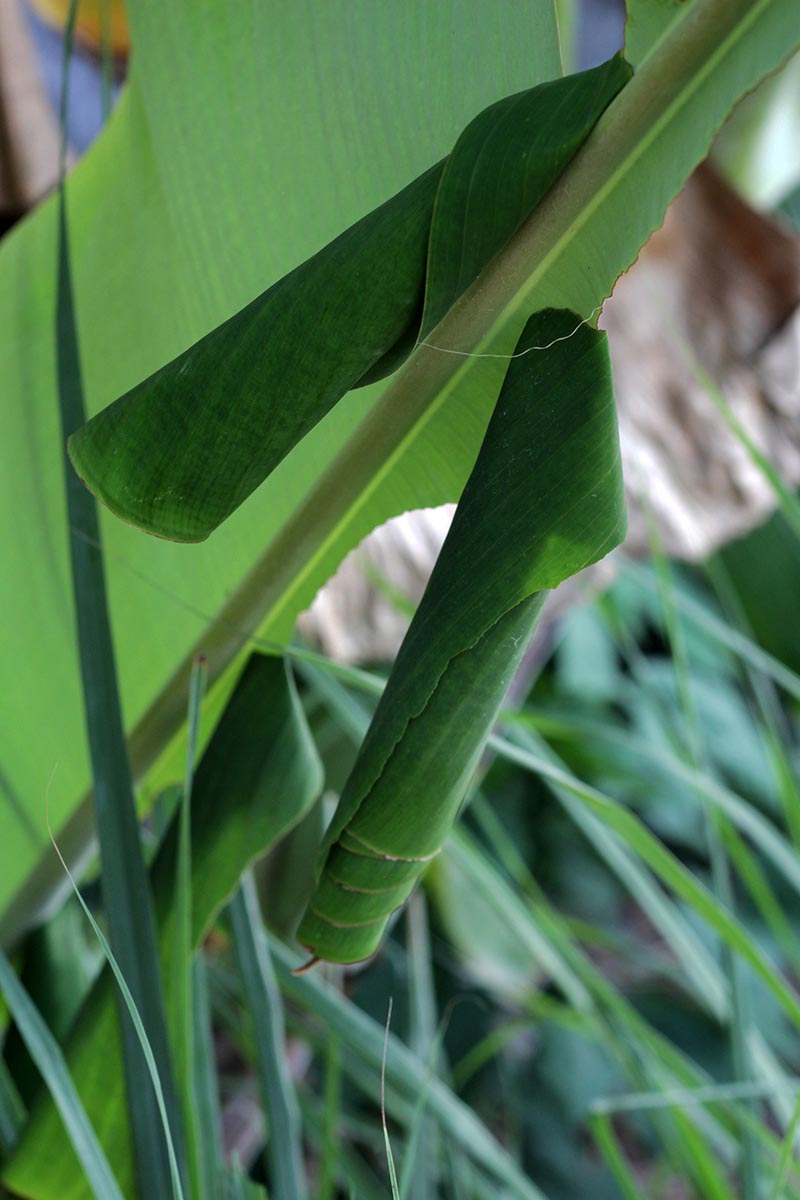
Phloem is the part of a plant’s vascular system that transports sugars – the result of photosynthesis – to parts of the plant that need it.
If you have an aphid infestation, you’ll be able to physically see these pests when you get up close and personal. Aphids are one of those pests that, within a blink of an eye, suddenly your plant will be covered in a colony.
You’ll also see signs of stress on your cannas, like yellowing or browning leaves, stunted growth, and few to no new flowers.
If you closely inspect your plant’s stems and leaves, you’ll see what looks like small grains of rice.
These small grains of rice aren’t the aphids, but the molted skeletons left behind by the more mature adults. Their actual bodies are pear shaped, and can be black, brown, yellow, or light green.
You might also notice a sticky substance on your cannas – this is known as honeydew. It’s a secretion that comes out of aphids when they feed on the plant’s sugars found within the phloem.
Honeydew can cause an outbreak of black sooty mold on your canna lilies. This type of mold is annoying to deal with, but isn’t the worst thing that can happen due to an aphid infestation.
In the worst case scenario, aphids may inject viruses into your plant, weakening your cannas to the point of death. Viruses are much more difficult to manage, so it’s better to avoid the issue altogether and get rid of those aphids, pronto.
Luckily, aphid infestations are pretty easy to fix. If there aren’t many bugs on your canna lilies, you can wash them off with a strong stream of water.
In the case of a large infestation, use an all-purpose insecticidal soap like this one from Bonide, available in 32-ounce bottles from Arbico Organics.
This insecticidal soap will kill the aphids on contact, but it doesn’t persist in the environment.
This is good news for beneficial insects if it’s used properly. You’ll need to reapply every two weeks until the issue is resolved.
There are a lot of ways to manage all the different types of aphids out there. We’ve put together a full pest management guide on these annoying little bugs if you’d like to learn more.
Caterpillars
There are a few different types of caterpillars that will try and make a meal out of your canna lilies. The main types you might see are wooly bear caterpillars, saddleback caterpillars, and canna lily leafrollers.
You’ll know you’re dealing with caterpillars if you begin to notice large holes in the foliage of your cannas in late spring. Let’s get into some of the likely culprits.
Wooly bear caterpillars (Pyrrharctia isabella) are the larval form of the Isabella tiger moth.
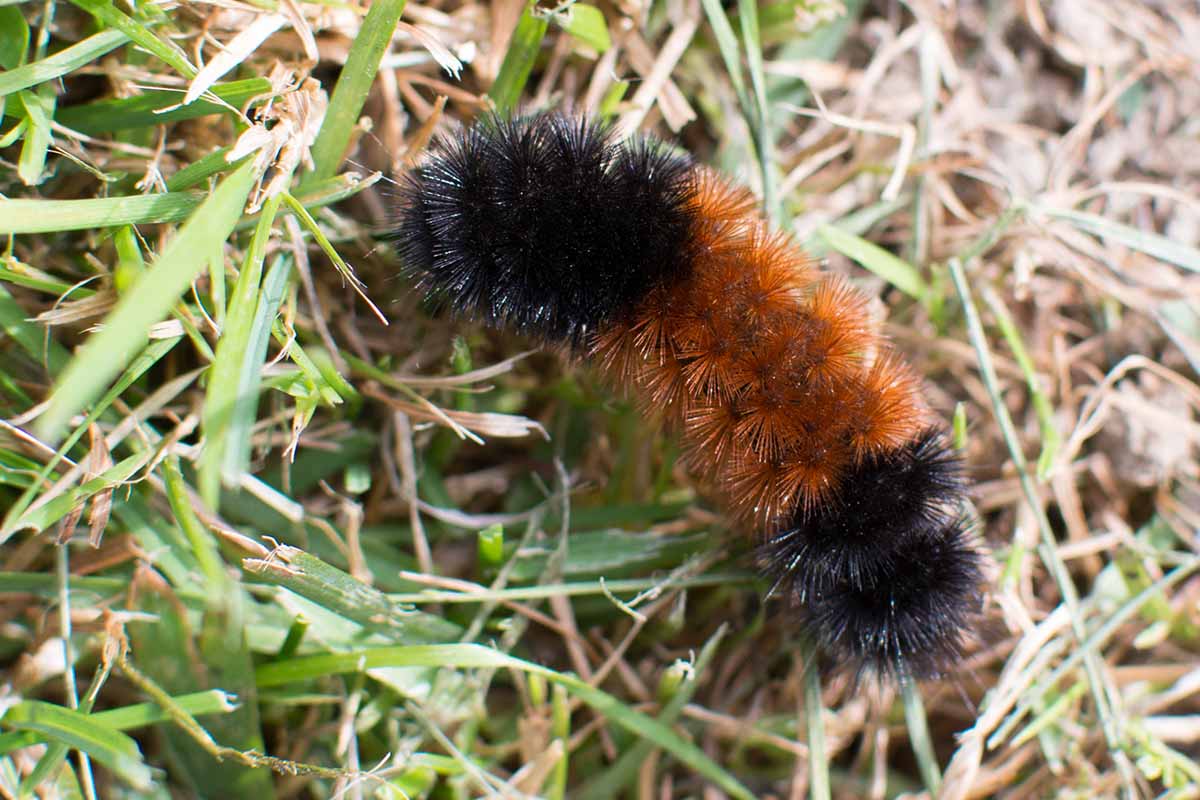
These fuzzy caterpillars are reddish-brown in color, with a black posterior. These caterpillars have a variety of host plants they feed on, including canna lilies.
Saddleback caterpillars (Acharia stimulea) are the larval form of the saddleback caterpillar moth, and these pests are native to North America.
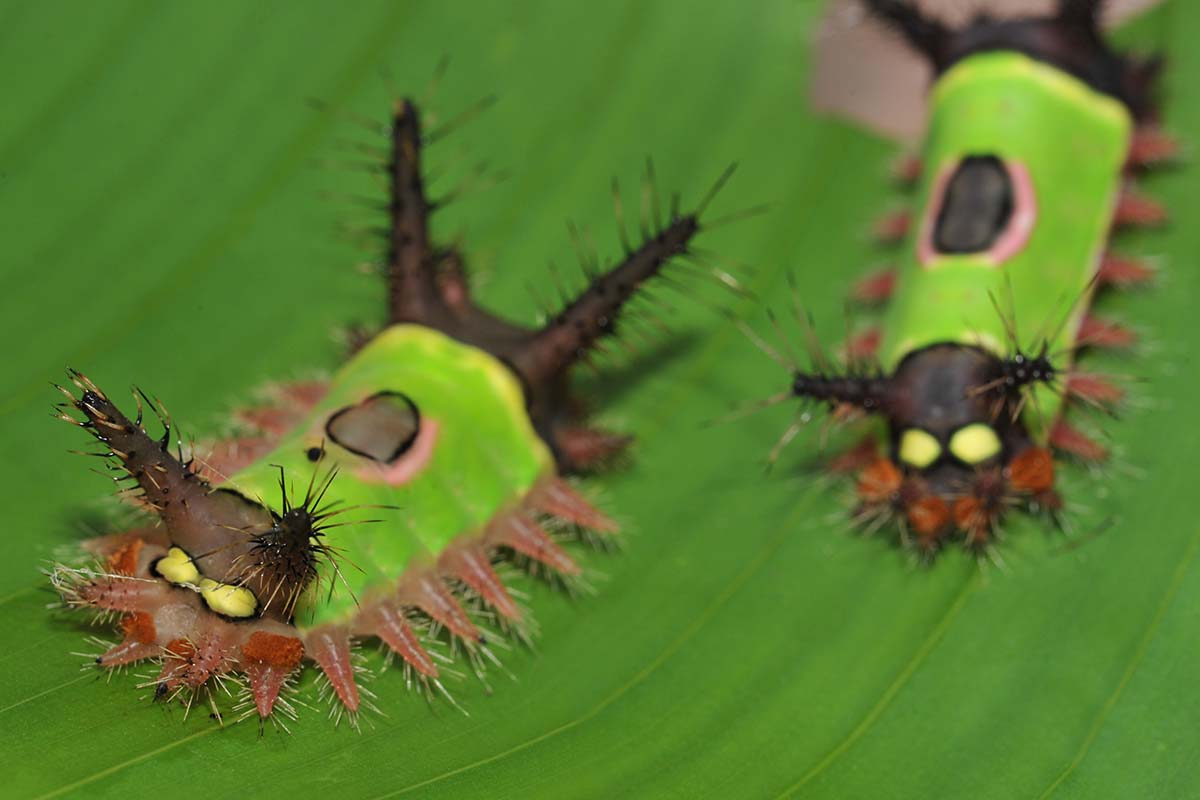
It’s a pretty conspicuous caterpillar, with a brown body and a bright green “saddle” directly in the middle of its back. These caterpillars have venomous spines, so don’t pick them up without your garden gloves on.
Like wooly bears, saddleback caterpillar infestations aren’t unique to canna lilies. They both feed on a wide range of garden plants, so if you find them on your cannas you should check the rest of your landscape as well.
The best way to deal with both of these is to simply pick them off of your plant and drown them in a bucket of soapy water. You can also spray them directly with your choice of insecticidal soap.
Now, let’s talk about the canna lily leafroller. There are actually two types, the larger canna leafroller (Calpodes ethlius) and the lesser canna leafroller (Geshna cannalis).
The adult forms of both of these caterpillars are types of moths. G. cannalis, in its adult form, has light brown wings with dark brown lines across them.
C. ethlius, also known as the Brazilian skipper, has light brown wings with white spots dappled across them. When the wings of this species are spread, you’ll also notice a tinge of light orange near the body.
Both of these caterpillars can absolutely devastate the foliage on your canna lilies. They are called leafrollers because they literally roll themselves up inside the leaves of cannas, sealing themselves in with their silk.
If you’re lucky, you’ll notice the small light pink or green eggs laid by the adult moths first, giving you a head start on pest management. The eggs will be laid on top of the leaves.
When these caterpillars emerge from their eggs and grow, they have green bodies and a black head that will eventually turn orange with maturity.
As they grow, canna leafrollers spin themselves up in new leaves to safely feed, until they reach their max length of two inches. They’ll each stay sealed within their own leaf pocket until they’ve outgrown it, moving to another leaf and repeating the process again and again until pupating.
The main way to get rid of leafroller caterpillars is to use Bacillus thuringiensis kurstaki (Btk). It’s usually sold as a spray, and will kill the caterpillars within a few days after the first application.
Btk is a natural bacteria that infects larvae with bacterial spores, disrupting the digestive system when the spores are ingested. Upon initial exposure, caterpillars or other larvae will stop eating and die within two to five days.
Monterey Bt Liquid from Arbico Organics can be used to quickly fight a leafroller outbreak.
When spraying Btk on your canna lilies, you should completely drench the leaves to ensure contact with the caterpillars. You want to get the caterpillars to eat leaves covered in Btk, so focus on the rolled leaves as much as possible.
Btk degrades quickly when exposed to sunlight, so spray in the late afternoon so the bacteria can work overnight.
There can be as many as three generations of these pests within a single season, so you’ll need to apply Btk multiple times to manage infestations.
Japanese Beetles
Japanese beetles (Popillia japonica) are attracted to canna lilies by the scent of their flowers. Once they arrive, they notice those tasty-looking leaves. Then, they’ll munch away!
Japanese beetles feed on all kinds of garden plants, including cannas. It’s best to play both offense and defense with these pests.
As a defensive measure, apply beneficial nematodes to the planting area around your canna lilies in the early spring. Heterorhabditis bacteriophora will target Japanese beetle grubs hiding in the soil.
Japanese beetle grubs like to rummage around and eat on the rhizome systems or roots of host plants. The nematodes will kill off the grubs, setting you up for a mostly Japanese beetle-free growing season.
You can purchase beneficial nematodes of this species sold as NemaSeek from Arbico Organics.
What if you apply beneficial nematodes but still experience issues with adult Japanese beetles?
The next step is to grab a bucket of soapy water and hand-pick them off. Japanese beetles don’t move fast, so you’ll have the upper hand. Drown the adult beetles in your bucket, and dispose of them.
If you have to cover a large number of plants and can’t hand-pick, use a natural pesticide that contains pyrethrin. Pyrethrin is a biodegradable chemical pesticide derived from daisies that doesn’t persist in the environment.
However, while this pesticide is all-natural, that doesn’t mean it won’t harm other insects. Pyrethrin-based pesticides should be applied directly to the beetles. Choose a non-windy day in the late afternoon or evening, when friendly pollinators aren’t active.
Check out our full, in-depth guide on managing Japanese beetles in your garden.
Scale Insects and Mealybugs
Scale insects are sap-sucking pests that will do their best to suck your canna lilies dry. There are over 6,000 different species of scale, and around 1,000 of these are present within North America.
Scale insects fall under the order Hemiptera, where the most common families are mealybugs, soft scale, and hard scale insects. All three of these insects will feed on your canna’s foliage and stems.
Mealybugs and soft scale insects are sap-suckers and produce honeydew, while hard scale insects are chewers that don’t produce honeydew.
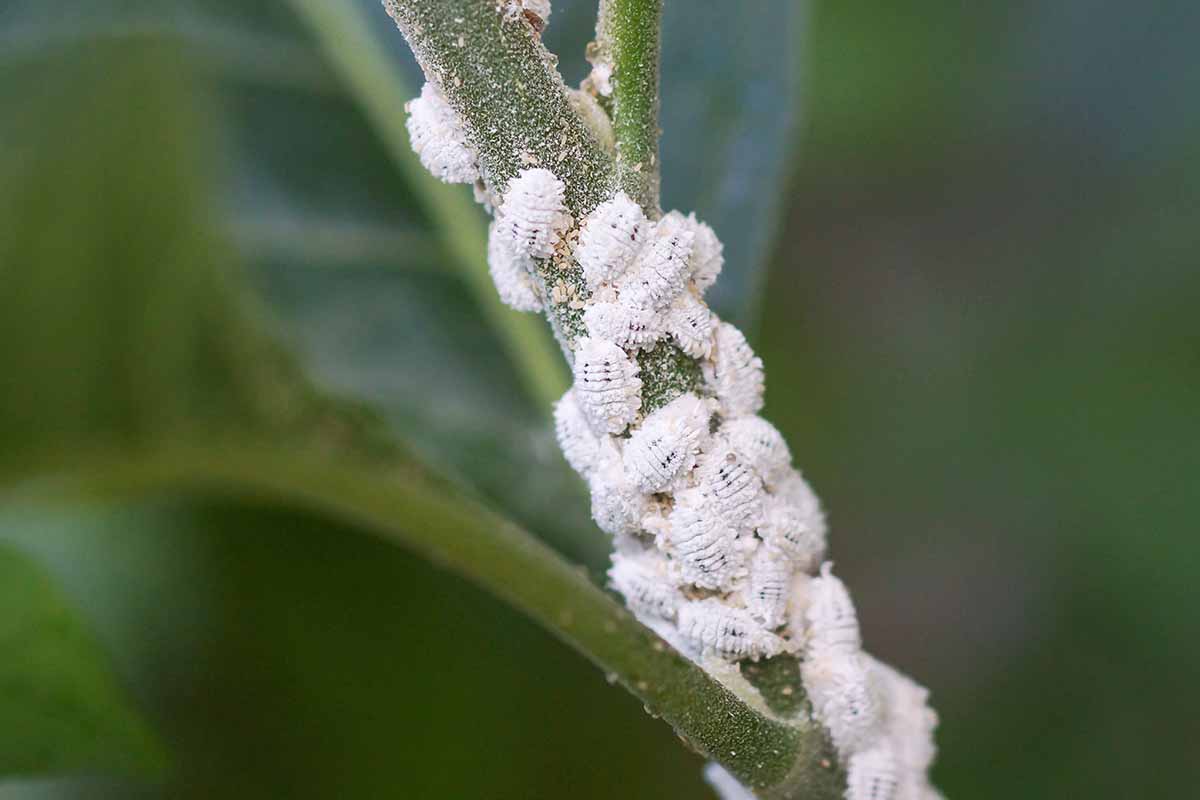
First, let’s talk about mealybugs.
If you live in the United States, there are around 275 different species of mealybugs that could be infesting your canna lilies.
You’ll know you have a mealybug problem if you see groups of ovular, cottony, wingless insects nestled in the crevices between the stems and leaves.
Mealybugs love warm and moist environments, which is why they target your water-loving tropicals.
The citrus mealybug (Planococcus citri) is the most widespread in North America, and tends to hang out in moist, humid areas like greenhouses.
Next, let’s talk about soft- and hard-shelled scale insects.
Like their names imply, hard- and soft-shelled scale insects have a shell that protects them while they feed on your plants.
They are mostly immobile or travel short distances on your plant, usually burying themselves slightly within the stem. They prefer to stay and feed in one place, if possible.
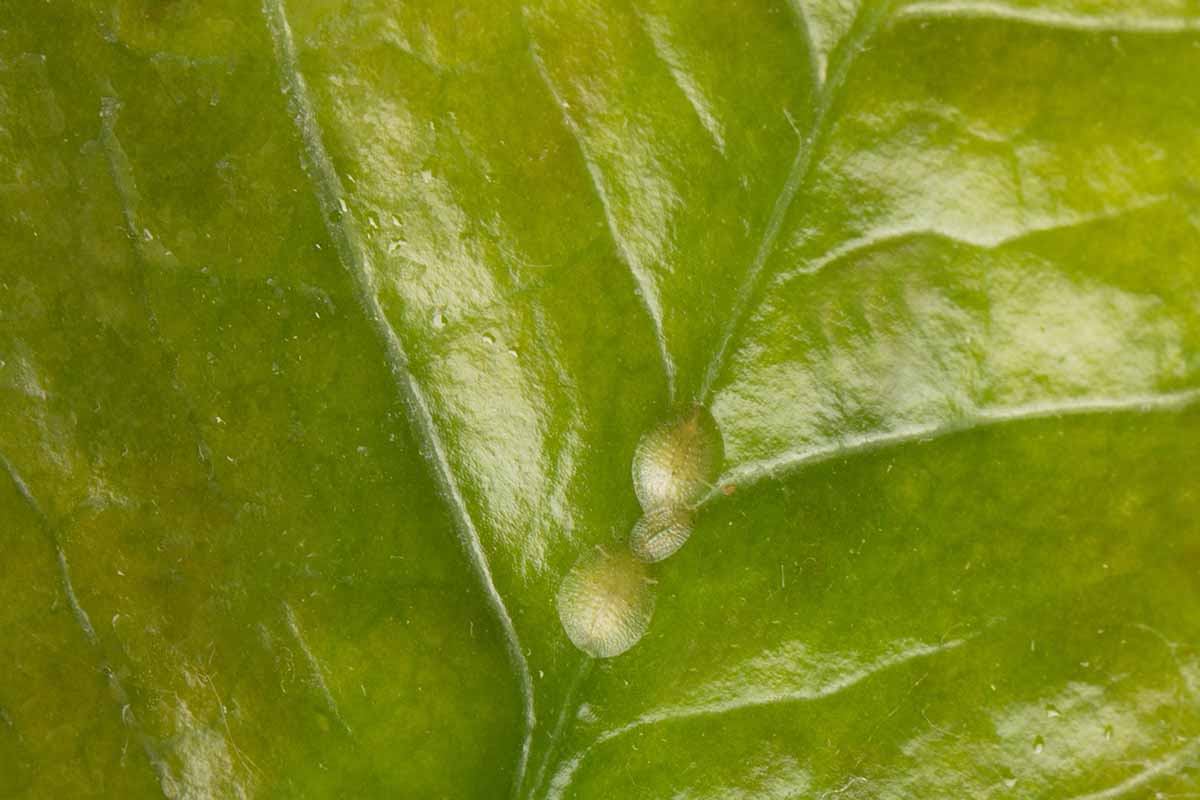
These types of insects will appear as dark bumps along the stems and foliage.
In order to manage scale insects, you’ll need to take a two-step approach. First, you’ll need to apply an insecticidal soap or horticultural oil, like neem, that will work to knock down a large part of the population.
Then, you’ll want to introduce beneficial insects like lacewings (Chrysoperla rufilabris) and mealybug destroyers (Cryptolaemus montrouzieri). Wait a minimum of seven days after neem oil treatment before introducing beneficial insects.
Lacewings may be sold as eggs, larvae, or adult insects. Mealybug destroyers are available in adult form from Arbico Organics.
For a full overview on all the different types of scale insects you might encounter in the garden and how to identify them, check out our guide.
Spider Mites
Did you suddenly notice little webs all over the foliage of your canna lilies? This is a sign of one of the garden’s most common pests: the spider mite.
Spider mites, from the Tetranychidae family, are tiny arachnids that will infest your plants in colonies.

They feast on the contents of your canna’s leaves – sucking out the juice within the cell walls of the foliage until there’s nothing left. After feeding, they leave behind silvery or yellow spots on the leaves.
Like other sap sucking insects, they can spread plant diseases that affect canna lilies.
While spider mites are technically arachnids, they aren’t spiders. They get this name from their webbing habits when they colonize plants. Spider mites are herbivores, not carnivores like most spider species.
Spider mites are difficult to see because of their size, but also because they prefer to hide on the underside of leaves.
Depending on the species, they can vary in color and size, ranging from nine-tenths to one and a quarter millimeters long, in colors like red, brown, yellow, or green.
The good news: spider mite colonies are easy to manage. Neem oil concentrate mixed with water will take care of most spider mite infestations after two to three applications.
If you’re still struggling with spider mites after using neem oil, step it up a notch by introducing a biological control like predatory mites (Phytoseiulus persimilis).
You can buy these predatory mites from Arbico Organics, starting in containers of 2,000.
P. persimilis should be applied at least 48 hours after the last neem oil treatment. They’ll munch on spider mites at every life stage: egg, nymph, and adult.
You’ll want to reapply these beneficial insects every seven days until you no longer see spider mites on your canna lilies.
When the level of spider mites on your canna lilies gets too low, P. persimilis will leave your plant in search of a new food source.
They might help to control spider mites within your entire garden landscape, before moving on to your neighbor’s yard next – a beneficial insect, indeed!
Learn more about how to deal with spider mites in our guide.
Thrips
Another common type of garden pests known for their sap-sucking qualities, thrips. Thrips are small, bullet-shaped, winged insects that pierce the stems of your canna lily to feed.
From the order Thysanoptera, there are approximately 6,000 different species of thrips. Some are beneficial pollinators or mite predators that eat spider mites – an absolute win.

However, thrips can still feed on every aboveground part of your canna lily, potentially infecting it with mosaic viruses.
We’ve put together a full pest guide on thrips, describing the different viruses carried by these pests and how they can impact plants – with pictures!
This is another kind of pest that will absolutely explode in number within just a few days if left unchecked. Thrips can cause stunted growth, yellow stippling on the leaves, and bloom failure.
Unfortunately, thrips may be long gone by the time your plant begins showing symptoms of an infestation, which is why monitoring is so important.
These pests are a big issue in commercial greenhouses where monitoring is done by hanging sticky traps.
If you’re concerned about thrips or have had issues with them in the past, hang some sticky traps near the base of your cannas. This is where thrips like to hide.
Blue sticky traps are made specifically to attract thrips and, surprisingly, leaf miners. Grab some of these commercial-grade blue sticky traps from Arbico Organics.
Now that you’re better able to monitor for these tiny pests, what’s next if they do infest your canna lilies?
Once again, we’ll be using a combination of an organic pesticide, like neem, and an application of a beneficial predator insect, like lacewings.
Green lacewings are an excellent choice to introduce because thrips are one of their preferred foods.
These predator bugs will feed on thrips at every life stage. Plus, each lacewing larva can eat at least 200 pests and pest eggs a week for the first three weeks of its life.
Lacewing larvae are available from Arbico Organics.
Wait at least seven days between spraying neem oil and introducing your lacewing larvae.
Kick These Canna Pests to the Curb!
Canna lilies can become a tasty treat for pests within your landscape – but with a little well-timed prevention and active monitoring, you should be able to easily take care of infestations.

These plants thrive in moist environments, which also attract many forms of sap-sucking pests that will pierce the stems and foliage of your plant, sucking out the contents.
This alone will weaken the plant, but the bigger threat is the viruses that can be passed by these pests, which are much more difficult to manage.
Luckily, all the common pests that will infest your canna lilies are easy to spot if you’re regularly monitoring for them. Control methods like attracting or applying beneficial insects and trusty neem oil are some of the best ways to combat infestations.
Canna lilies are an excellent plant to include in your landscape – they attract beneficial pollinator insects and hummingbirds, and they’re gorgeous to look at. I hope you’ll share your experiences with pests in your own garden in the comments section below.
And for more information about cultivating canna lilies, add these guides to your reading list next:
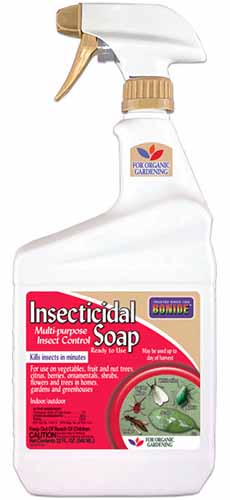
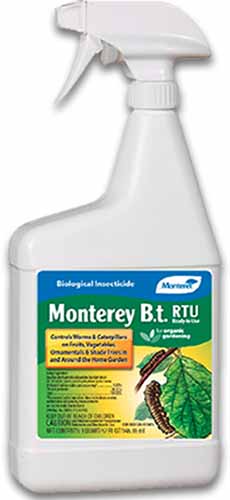
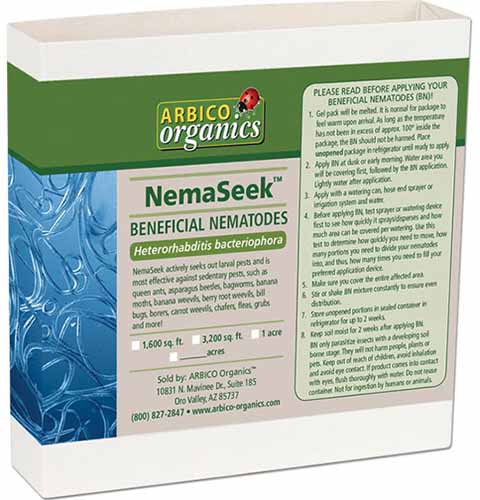
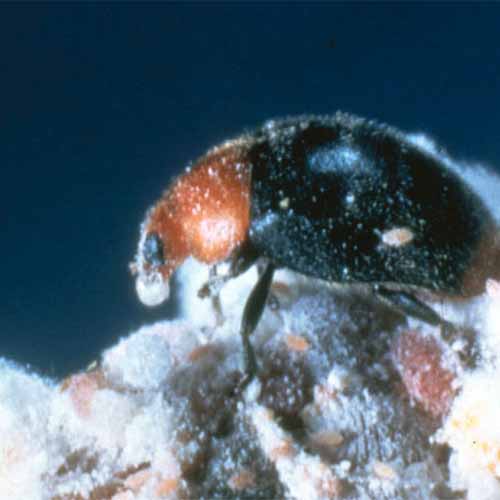
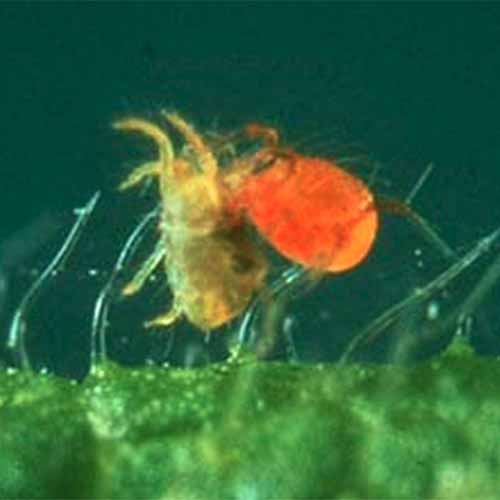

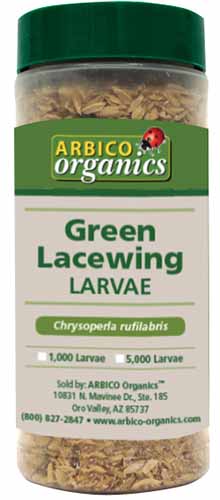
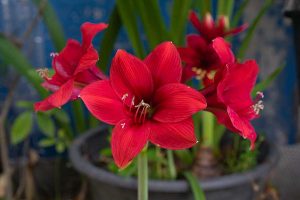


I don’t know what to say.. the information is soo Detailed . And informative.. even about the Gladiolus. As of now I have 4 Colours of Canna Lilly . Would like to have a word with the author if possible
Thanks for the kind words Sagar, if you have any specific questions feel free to ask!
Help – what is eating my plant?
Hi Jeana –
I see somewhat scalloped edges along the chewed areas and what appear to be slime trails, leading me to believe that snails/slugs are feasting on your plant during the nighttime hours.
Brown circular patches may indicate bacterial leaf spot.
Apply organic neem oil to the tops and undersides of the foliage and place snail/slug traps.
Keep an eye on your plant. Caterpillars and beetles can cause similar damage. If you can spot an insect feeding, you can approach the issues with more certainty.